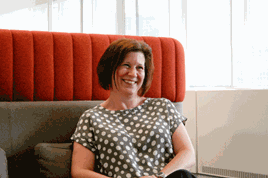“SMIS is what the main line operators use to report all their safety incidents. They all report to one database, RSSB analyses all the data, and that’s what produces the industry’s overview of where the safety risks are. And they don’t have anything similar for health.”
Back again to safety-critical focus. Is this changing?
“The safety data is very much focused around catastrophic risk and train accidents, basically. But because there hadn’t been the same level of focus on occupational health, there wasn’t the same need for the industry as a whole to collect health data. I think there is now definitely an acceptance. There’s a need for it - it’s just designing something that is practical, manageable and meaningful, and these things do take time.”
So what is being done to implement a solution?
“You can’t just bolt on a health database. I was part of a working group who tried to look at this issue a couple of years ago, and it is incredibly complex in getting a uniform disease classification system - how you decide whether it’s work-related or not. So it’s not a straightforward meaning. We can’t just replicate what there is for safety exactly, because it is different, but the industry has committed on its Roadmap to build a common health data collection system. And it might just be quite simple, initially.”
Mawhood is keen for the industry not to run before it can walk:
“Let’s get something in there, and then we can build on it once we see how it works, rather than trying to put in a full Rolls-Royce system. Let’s get something with the core information that we need, and then let’s build on it.”
What should the industry take away from this latest report? Where would Mawhood most like to see progress?
“I think one of the keys is the monitoring and the assurance arrangements, checking that what they say should be happening is actually happening. I think that would be the key to driving improvements.
“It’s the training of the managers and the checking and monitoring of delivery on the ground. If they got those two things right, that would make a big difference. Because I think they know now what needs doing. The intent is there, the management system has been put in place - it’s the delivery.
“The health data will tell them where they need to focus their efforts, but in terms of delivery they need legal compliance, which is what we’re really all about. It’s getting that delivery at ground level, and I think that getting manager competence and monitoring are the two bits that are underdeveloped and really need attention.”
A key part of that monitoring is the use of RM3 for health (see panel, page 71), because it would provide a benchmarking tool for the industry.
Mawhood explains: “If we could push the message to use RM3 for health, that would be fantastic because it would allow the industry to help themselves, rather than having ORR peering over their shoulders saying ‘you’re not very good at this and you’re not very good at that!’ They can assess themselves.
“And we can use it to benchmark across industry, because you can score different elements of management systems - from being quite weak to excellent, on a rating of one to five. So we can look at a company’s progress over time, and we can also identify where the weaknesses are within an individual company, according to whether they are high-score or low-score. We can also start to look at benchmarking across the industry - across train operators. We’re not in a position to do that on health yet, but it’s coming.”
Very important question: where does the ORR sit on the RM3 benchmark? Surely the ORR health management system must be perfect?
“Of course!” laughs Mawhood. “Really, really good! Yes, we don’t have quite the same health risks as other rail organisations. But we have just signed up to the public health responsibility deal, which is a government voluntary pledge that we’re encouraging others to sign up to as well. You make a public pledge, and you have to report on it on the Department of Health website each year. It’s a visible commitment to employee health and wellbeing.
“We’re trying to lead from the front - we definitely don’t want people to say ‘you’re not doing it’!”
The ORR, and Mawhood in particular, is obviously committed to implementing a clear health agenda in the industry. Success is already happening - the Invitations To Tender for the Northern and TransPennine Express franchises included requirements for worker health and wellbeing. What the industry now needs is complete recognition that its workforce health is as important as safety.
- This feature was published in RAIL 778 on July 8 2015













Login to comment
Comments
No comments have been made yet.